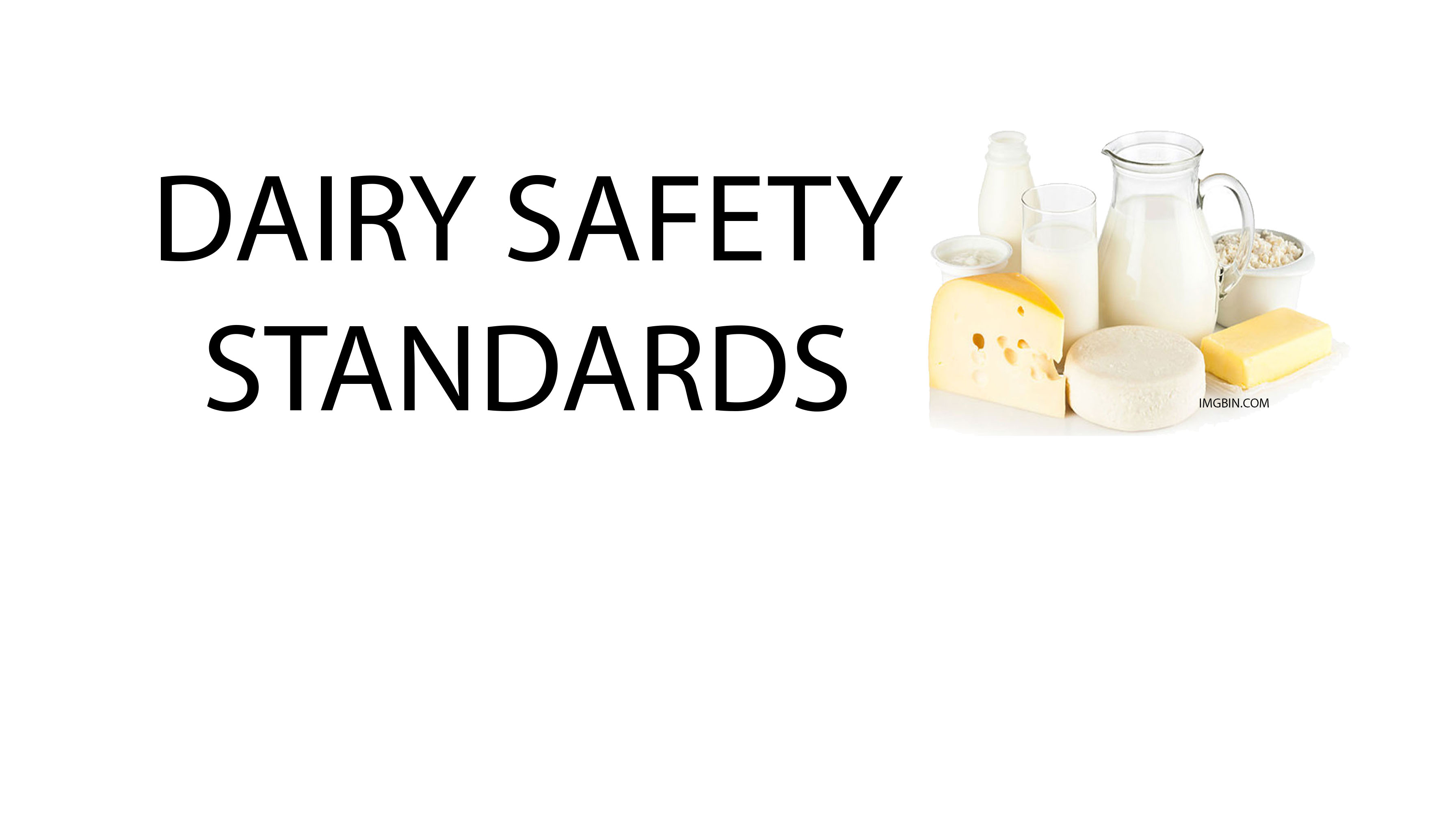
Milk is a very nutritious food consumed by all ages. The Dairy Safety Standards ensures that milk intended for human consumption are safe and of good quality. Listed below are the common standards used by farms and dairy plants before and after processing raw milk.
RAW MILK
| PARAMETER | STANDARD |
| Standard Plate Count (bulk milk) | ≤ 300,000 cfu/mL |
| Standard Plate Count (individual farm) | ≤ 150,000 cfu/ mL |
| Antibiotic Residue Test | Negative |
| Temperature | 2 to 4 °C |
| Somatic Cell Count (SCC) | ≤ 400,000 cells/ mL |
| Titratable Acidity | 0.14% to 0.18% lactic acid |
| Hydrogen Ion Concentration (pH) | 6.6 to 6.7 |
| Aflatoxin M1 | 0.5 µg/kg maximum |
| Heavy metals, veterinary drug residue, pesticide residue | Must comply with Codex Alimentarius Commission |
| Organoleptic / Sensory | |
| Smell | Pleasant |
| Appearance | No visible dirt |
| Milk Fat | |
| Cow | ≥ 3.0% |
| Carabao | ≥ 6.0% |
| Goat | ≥ 4.0% |
| Specific Gravity | |
| Cow | ≥ 1.025 |
| Carabao | ≥ 1.028 |
| Goat | ≥ 1.028 |
| Source: National Dairy Authority |
Pasteurized Milk
| PARAMETER | STANDARD |
| Organoleptic/ Sensory | |
| Smell | Pleasant |
| Appearance | No visible dirt |
| Taste | Pleasant; good |
| Temperature | 2 to 4 °C |
| Standard Plate Count | ≤ 50,000 cfu/mL |
| Coliform Count | ≤ 100 cfu/mL |
| E. coli Count | Negative |
| Salmonella/ 25 mL | Negative |
| Listeria monocytogenes/ 25 mL | Negative |
| Psychrotrophic Bacteria | ≤ 10 cfu/mL |
| Aflatoxin M1 | 0.5 µg/kg maximum |
| Heavy metals, veterinary drug residue, pesticide residue | Must comply with Codex Alimentarius Commission |
| Milk Fat | |
| Cow | ≥ 3.0% |
| Carabao | ≥ 6.0% |
| Goat | ≥ 4.0% |
| Milk Solids Non-Fat | |
| Cow | ≥ 8.25% |
| Carabao | ≥ 8.50% |
| Goat | ≥ 8.50% |
| Source: National Dairy Authority |
Dairy Safety Standards
